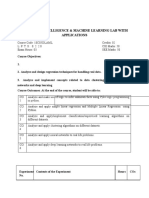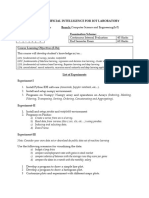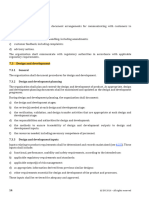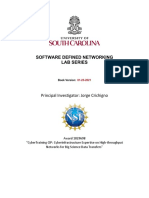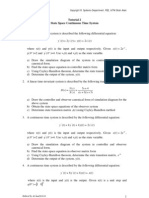0% found this document useful (0 votes)
8 views2 pagesMachine Learning Applications Lab
The document outlines the course structure for 'Machine Intelligence Applications Lab' with a focus on data manipulation, learning techniques, statistical approaches, classification models, and neural networks. It lists 15 practical programs that students must complete, covering topics such as data extraction, feature extraction, regression analysis, and model tuning. Additionally, it provides references for further reading on machine learning and its applications.
Uploaded by
harsha20041128Copyright
© © All Rights Reserved
We take content rights seriously. If you suspect this is your content, claim it here.
Available Formats
Download as PDF, TXT or read online on Scribd
0% found this document useful (0 votes)
8 views2 pagesMachine Learning Applications Lab
The document outlines the course structure for 'Machine Intelligence Applications Lab' with a focus on data manipulation, learning techniques, statistical approaches, classification models, and neural networks. It lists 15 practical programs that students must complete, covering topics such as data extraction, feature extraction, regression analysis, and model tuning. Additionally, it provides references for further reading on machine learning and its applications.
Uploaded by
harsha20041128Copyright
© © All Rights Reserved
We take content rights seriously. If you suspect this is your content, claim it here.
Available Formats
Download as PDF, TXT or read online on Scribd
/ 2





